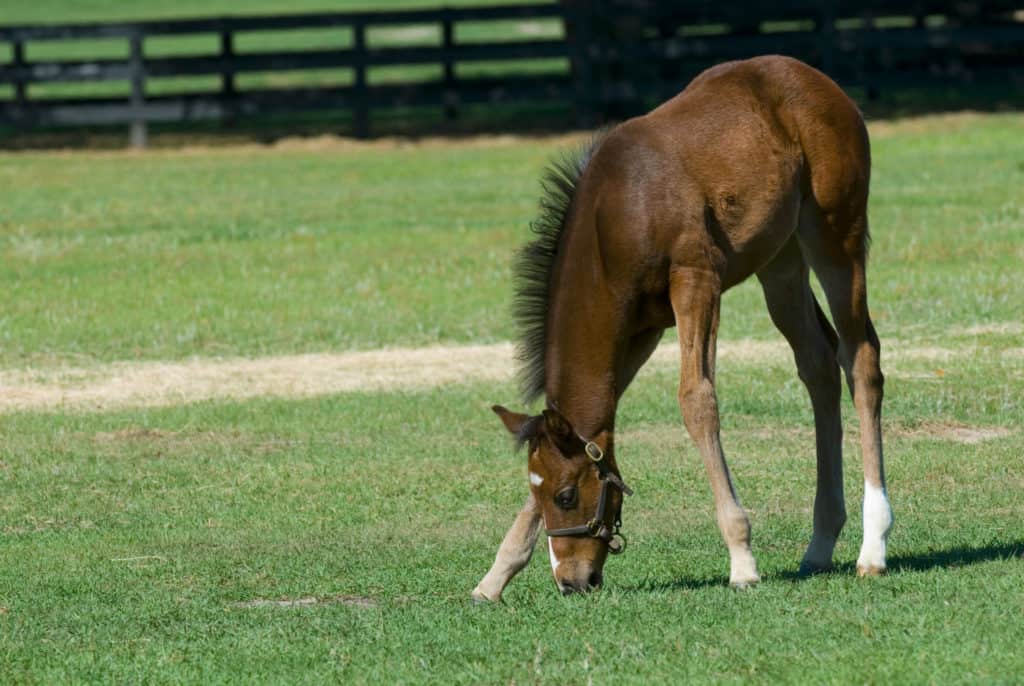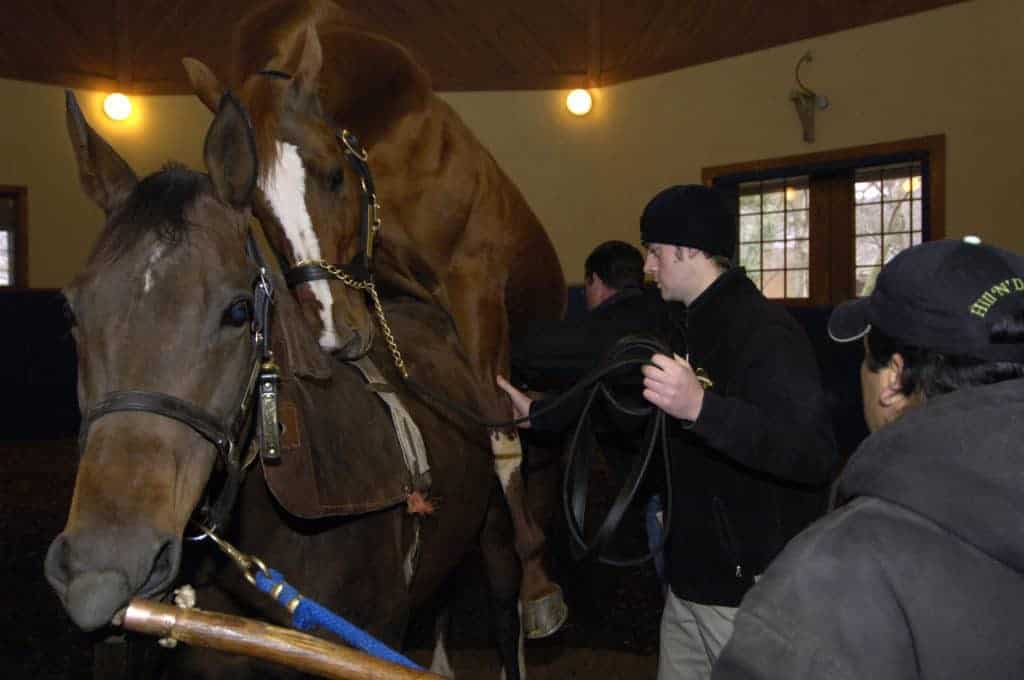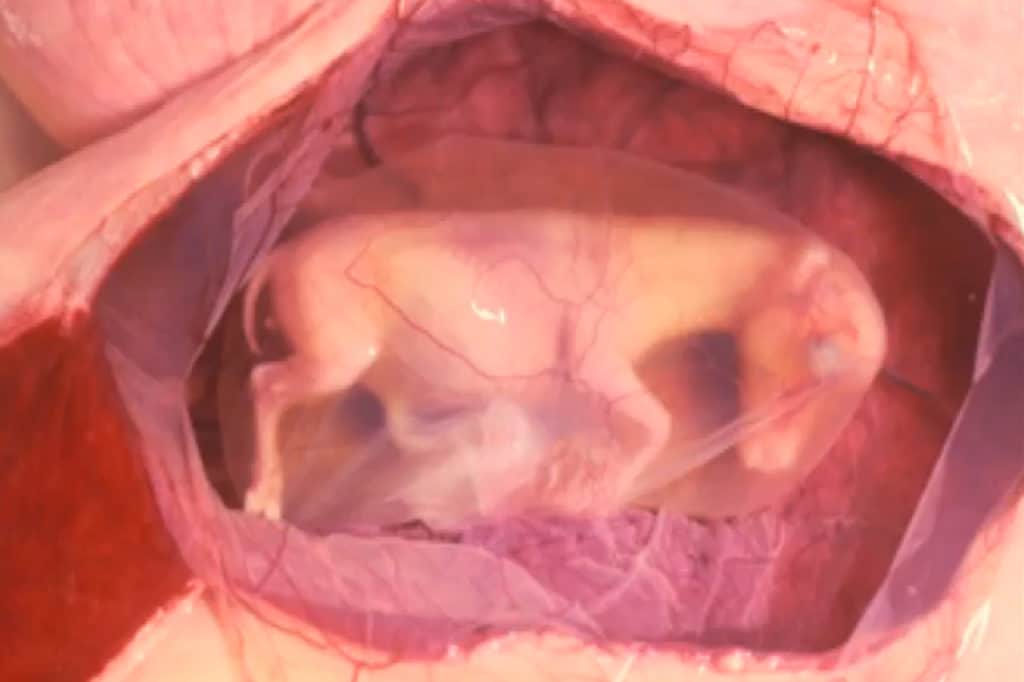
Young Horse Care and Development, Part 1 (Birth to Six Months) Excerpt
Excerpted tips on properly caring for the pregnant mare, newborn foal, and growing foal up to weaning with Dr. Nathan Slovis of the Hagyard Equine Medical Institute.
Horse breeding from planning through foal care

Excerpted tips on properly caring for the pregnant mare, newborn foal, and growing foal up to weaning with Dr. Nathan Slovis of the Hagyard Equine Medical Institute.

Update on assisted reproduction techniques, fetal programming, and stallion management strategies from the 2010 American Association of Equine Practitioners convention. (Interview with Dr. Katrin Hinrichs of Texas A&M University)

Proper nutrition, of course, is a critical factor in raising a healthy, sound foal–both for the broodmare before the foal is born as well as for the mare and foal throughout the foal’s development.
Registration is now open for the second annual Kentucky Breeders’ Short Course, hosted by the University of Kentucky College of Agriculture in partnership with the University of Minnesota. The Short Course will be held Jan. 21 and 22 at The Red Mile race track in Lexington
Dummy foal syndrome is not a disease but, rather, a broad term that applies to foals that exhibit abnormal, often vague behaviors and/or neurologic signs during their first few days of life.

Live cover breeding of horses remains a popular choice. Whatever your reason for choosing this method, these 10 tips will be useful as you plan a mating. Attention to safety and behavior go a long way in making the experience positive and successful.

Geneticists have created tools and tests that help horse breeders select for healthy foals. Furthermore, access to the equine genome means scientists can examine common diseases and conditions and find ways to prevent (and one day treat) them.
Is it possible to hear a fetal horse’s heart rate with a high-quality stethoscope? If so, at about what stage of gestation, and what is the optimal position of the drum?
A mare should be brought inside at night beginning 30 to 45 days before her due date. This is done for two reasons. The first is so she can become comfortable with the surroundings and feel that the foaling stall is a safe, private place. Mares that are not at ease might delay foaling and prolong their labor until they feel more secure. Such a delay can lead to complications.
Genetics is one of the many research focus areas at the University of Kentucky’s Gluck Equine Research Center. A subset of this emphasis area is the Animal Genetic Testing and Research Laboratory (AGTRL), which allows horse owners to investigate their horses’ DNA and offers a range of tests to the public, including those for genetic disorders and coat color patterns.
The University of Kentucky College of Agriculture’s agricultural economics program is helping provide state-of-the-art financial tools to the Thoroughbred industry.
For many years horse owners and veterinarians thought the nutrient needs of pregnant mares increased only at the end of gestation. But new research shows that pregnant mares’ nutrient needs increase as early as the fifth month of gestation.
Fertility issues in the horse can stem from multiple causes. One cause in mares is due to a disorder of sexual development (DSD) whereby the sex chromosome complement (genotype, or genetic code) is abnormal and does not agree with the external appearance of the horse (phenotype, or observable characteristics).

Dr. Donald Schlafer of Cornell University discusses the equine fetus and placenta.
The 10th International Symposium on Equine Reproduction July 26-30 at the University of Kentucky was presented in four sessions: the non-pregnant mare, the stallion, conception and early development, and the pregnant mare and perinatology.
Mette Christoffersen, DVM, and Morten Petersen, PhD, DVM, Dipl. ACT, both from the University of Copenhagen, and Pauline Peugent, a French student working on her master’s degree, have spent several months in Lexington researching equine reproduction.
Stay on top of the most recent Horse Health news with
"*" indicates required fields